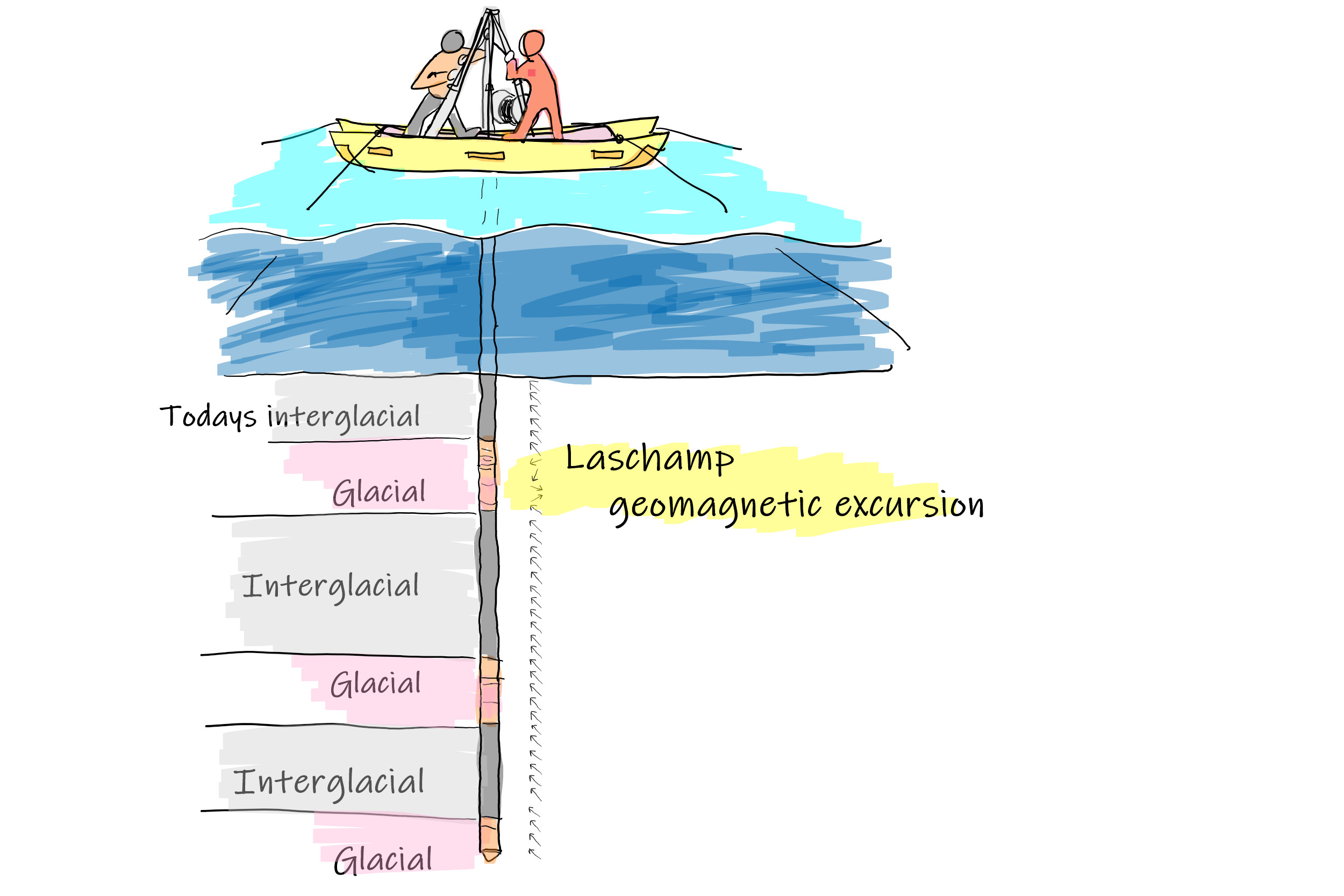
Sciences & Technology
A new thermometer for studying our past climate

Research finds the first Australian-based record of a major global event where the Earth’s magnetic field ‘switched’ – and north became south
Published 15 February 2021
Around 41,000 years ago something remarkable happened – the Earth’s magnetic field flipped, and for a short period of time, north was south and south was north.
This sort of event is known as a geomagnetic ‘excursion’ and the one 41,000 years ago is named the Laschamp excursion. Excursions occur irregularly through time and reflect the dynamics in our planet’s molten outer-core.

Alongside the upside-down compass, the strength of the Earth’s magnetic field almost vanished. This led to a big increase in cosmic and solar particles bombarding our planet because the magnetic field normally acts like a shield, deflecting these charged particles away from the Earth.

Sciences & Technology
A new thermometer for studying our past climate
We don’t know when the next geomagnetic excursion will be, but if this happened today, it would be very bad news.
Satellites would be rendered useless, our smartphone navigation apps would fail, and there would be major disruptions of our power distribution systems.
The economic loss of such a space weather event on the power distribution sector is estimated at $US7 to $US48 billion per day in the US alone.
Fortunately, at the time of the Laschamp geomagnetic excursion (named for the Laschamp lava flows in France where evidence of the excursion was first recognised), there weren’t any satellites or electric grids to disrupt.
But the excursion still left its mark, and for the first time we’ve been able to see its signature in Australia, in a 5.5 metre long sediment core from the bottom of Lake Selina in Tasmania. This sediment has captured 270,000 years of history.
So, how does a lake sediment provide evidence of a geomagnetic excursion? Magnetic particles are eroded from rocks, and make their way to a lake by wind or water, where they settle on the lake bottom.
These magnetic particles act like tiny compass needles, aligning with the Earth’s magnetic field.

As these particles accumulate and become buried, they become locked in place, leaving a history of the Earth’s magnetic field. The deeper we drill, the further back in time we go.

Environment
The climate legacies in our lakes
In 2014, I joined a team led by Associate Professor Michael-Shawn Fletcher from the University of Melbourne’s School of Geography. We travelled to a small sub-alpine lake in western Tasmania, where we drilled down into the sediment from a makeshift floating platform rigged to two inflatable rafts.
This core contains a record of the area’s climate, vegetation, and paleomagnetic conditions, but the first task for understanding the core was to accurately date its layers.
As part of our dating study of the Lake Selina core, published in the journal Quaternary Geochronology, we found that the biggest migrations (or changes) of the magnetic pole position and lowest magnetic field intensity are found at the time of the Laschamp excursion.
Because this was a global event that has been accurately dated elsewhere, we can use it to determine the age of the sediments in our core, in combination with other more conventional methods.
For a core that covers this long a time, including several glacial periods, no single dating method can be trusted to precisely determine its age, so our international research team employed a battery of analyses along the sediment core.

This included magnetic analysis to recover the paleomagnetic information held by those “compass needle” magnetic particles (at La Trobe University and the Australian National University), radiocarbon dating and x-ray fluorescence core scanning to look at the sediment geochemistry (Australian Nuclear Science and Technology Organisation), optically stimulated luminescence dating (University of Wollongong) and beryllium isotope analysis (CEREGE, France).

Sciences & Technology
When Central Australia slipped and trembled
The latter tracks the presence of the cosmogenic beryllium-10 nuclide which is formed by galactic cosmic ray particles colliding with oxygen and nitrogen atoms in the atmosphere.
Because these particles are charged, their incoming rate is modulated by the Earth’s magnetic field strength.
This means we find more beryllium-10 during a geomagnetic excursion when the magnetic field is weaker, and less efficiently shielding the Earth. Combining this finding with our paleomagnetic analysis gave independent confirmation of the Laschamp excursion in our core.
This is the first study of it kind in Australia since pioneering studies in the 1980s. Only two lakes in north-east Australia previously provided such “full-vector” record, where both the past directions and the past intensity of the Earth’s magnetic field are obtained from the same cores.
Four decades later, using modern state-of-the-art laboratories and data analysis, our results reveal exciting potential for conducting similar research in other Australian lakes, and sets the ground for developing new paleomagnetic dating tool in Australia for archaeology and paleosciences.

More such data from Australian lake sediments, archaeological artefacts, lava flows and speleothems (cave deposits including stalagmites) are critically needed to improve our understanding and models of the Earth’s magnetic field. Such information may one day help us to predict the next geomagnetic excursion rather than just waiting for our phones stop working and migratory birds to start veering off course.

Sciences & Technology
Australia’s mountains are still growing
Dating our core is just the start, and we’re sure the core has more secrets to impart as we continue to analyse it.
We are finding evidence of the ecosystem changes that occurred between when Tasmania’s Aboriginals managed the land over thousands of years and the abrupt changes that have occurred since the arrival of Europeans 200 years ago.
Our work also shows that the 270,000-year climate story from Lake Selina closely matches the climate story retrieved from Antarctic ice cores.
And we are going even further back in time recovering the climate history of Tasmania. In our current work, we are analysing sediments from the 816,000 year old meteorite impact at Darwin Crater, not too far from Lake Selina.
This research was supported by two Australian Research Council Discovery Indigenous grants, a La Trobe University DVCR Research Fellowship and a University of Melbourne McKenzie Fellowship.
Banner: Getty Images